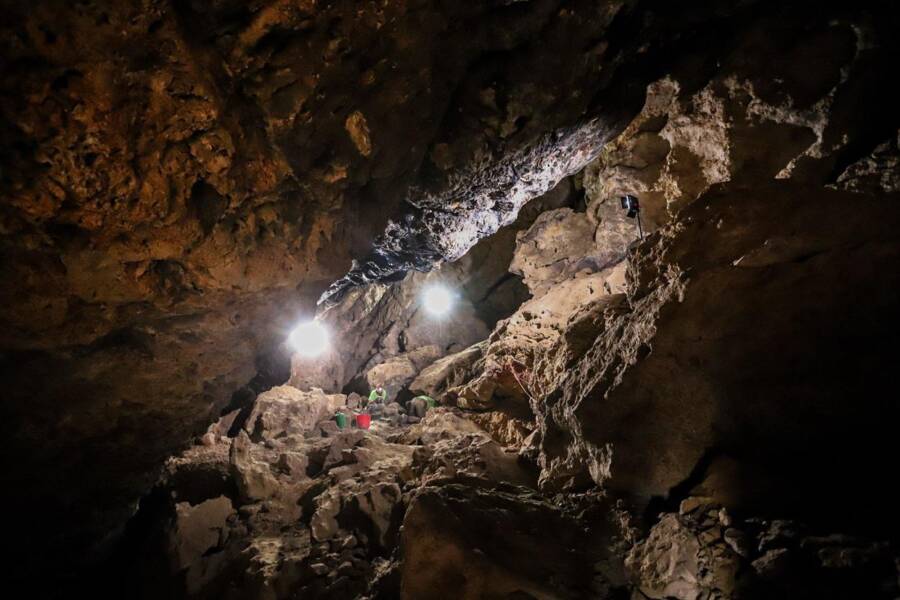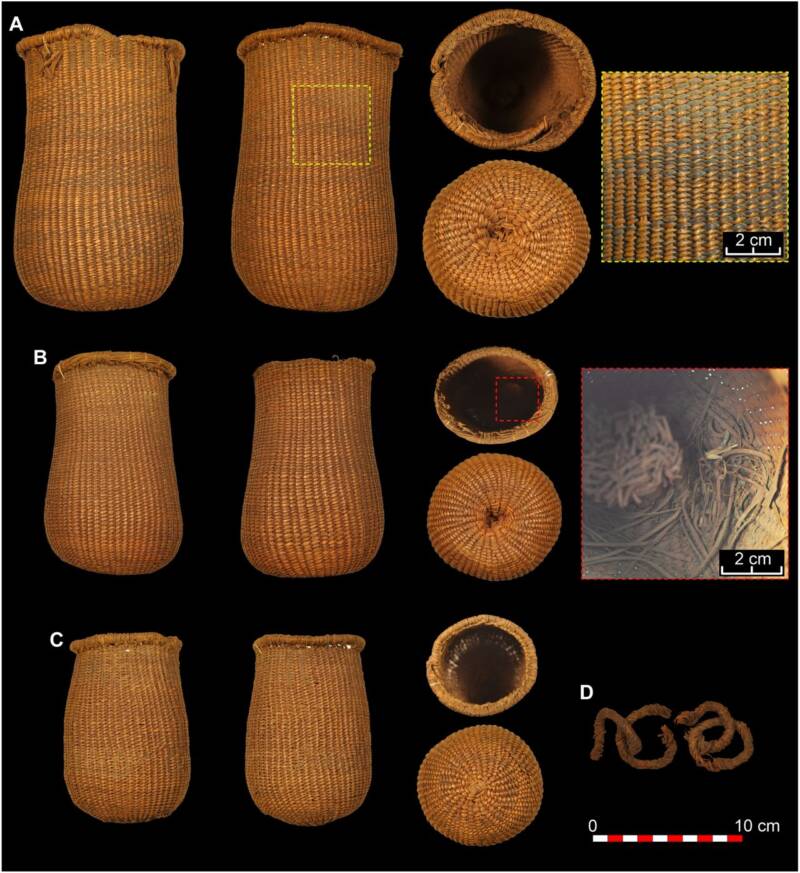Researchers announced that the woven grass sandals discovered in Spain’s Cueva de los Murciélagos are roughly 6,200 years old, making them the oldest shoes ever discovered in Europe.
Martínez - Sevilla et al . ,Science AdvancesThe complexity of the sandals challenges long - held assumptions about pre - farming bon ton in Europe .
In 1857 , mineworker work deep in Spain ’s Cueva de los Murciélagos ( “ cave of bats ” ) stumble across an unbelievable forgotten chamber fulfil with mummified corpses , basket , wooden tools , and woven physical object . Now , researchers say that 22 pairs of woven grass sandals let out in the cave are some 6,200 year old — and thus the old shoes ever feel in Europe .
According to a subject field published inthe journalScience advance , the place are “ the earliest and all-inclusive - ranging assembly of prehistoric footwear , both in the Iberian Peninsula and in Europe , unparalleled at other latitudes . ”

Martínez-Sevilla et al.,Science AdvancesThe complexity of the sandals challenges long-held assumptions about pre-agricultural societies in Europe.
CNNreports that the sandal were first collected by Spanish archaeologist Manuel de Góngora y Martínez in 1867 , 10 years after miners find and looted the inhumation site . He gathered the object , including the horseshoe , and gave them to museums . They were examine in the 1970s , but this latest report found that the sandal were much older than in the beginning thought .
Blas Ramos RodríguezThe items were discover in Cueva de los Murciélagos in the 19th century , but a recent subject has offer new insights about them .
Made of Gunter Wilhelm Grass and other rude vulcanized fiber , the sandals were preserved for thousands of years by the cave ’s dry , cool gentle wind . CBSreports that two dissimilar kinds of shoe were discovered , one with a “ consistent woven sole ” and one with a hard “ central core . ” The second kind of shoe appeared to have a set of fundamental laces made of character that “ may have been placed between the first and second toe ” and which “ relate to a braiding fixed to the heart of the sandal , which could be tied around the ankle . ”

Blas Ramos RodríguezThe items were discovered in Cueva de los Murciélagos in the 19th century, but a recent study has offered new insights about them.
establish on Góngora ’s notes about the discovery , investigator also believe that the bodies found in the cave were inhume there while wear the shoes . Because some of the sandals show very fiddling wear , it ’s additionally possible that they were crafted specifically for burial purposes .
The investigator also test a identification number of other object discovered in Cueva de los Murciélagos , like woven basket , which they say declare oneself a fascinating new perspective on pre - agricultural societies in Europe .
Martínez - Sevilla et al . ,Science AdvancesResearchers also examined a number of other objects find out in Cueva de los Murciélagos , including woven baskets .

Martínez-Sevilla et al.,Science AdvancesResearchers also examined a number of other objects discovered in Cueva de los Murciélagos, including woven baskets.
“ The quality and technological complexity of the basketry makes us question the simplistic assumptions we have about human community prior to the arrival of agriculture in southerly Europe , ” Francisco Martínez Sevilla , one of the sketch ’s authors , explained .
harmonize to CNN , that ’s because most research on pre - farming societies is base on durable objects or else of perishable one , like woven shoes .
María Herrero Otal , another of the study ’s authors , explain to CBS that the shoes are thus a rare find for archaeologists and proffer “ a alone opportunity to study societal aspects of other human groups . ”
The sandal and other detail break in Cueva de los Murciélagos also put up a fascinating look at the tenacious history of woven goods in Europe . Today , masses in Spain and Portugal continue to wander grass objects .
“ It entail that the role of esparto grass has start out at least 9,500 years ago , and it is a tradition which is still hot in Iberia [ Spain and Portugal ] , ” Otal explain to CBS . She added : “ It is spectacular how the proficiency , the raw material and its preparation has been used for chiliad of geezerhood and there are still citizenry working in the same room . ”
After reading about how Europe ’s oldest have sex horseshoe were identify in a Spanish cave , see how researchers discover theworld ’s oldest bedin a 200,000 - year - old South African cave inhabit . Then , discover howNorth America ’s largest know cave artwas uncovered in a cave in Alabama .